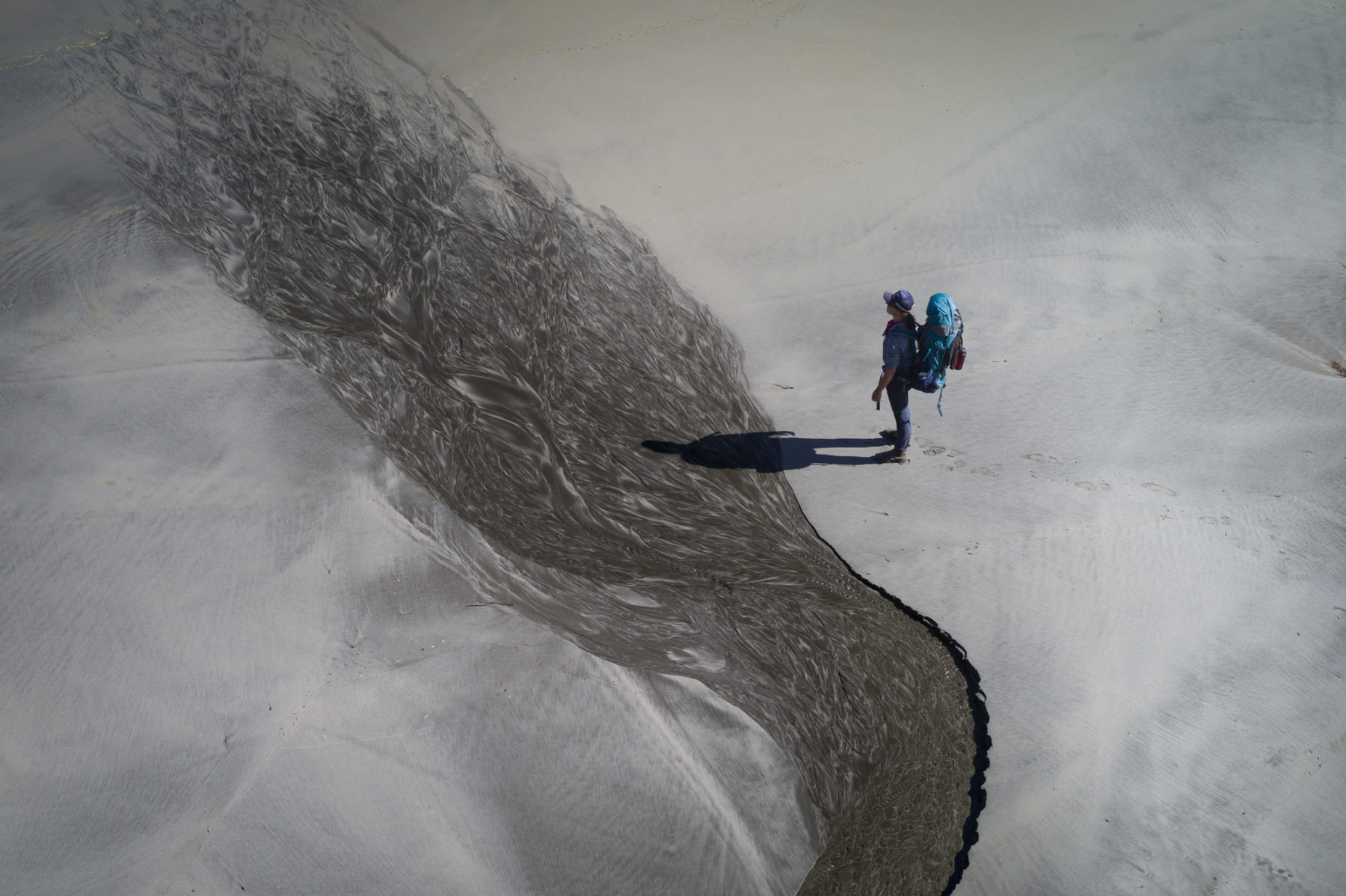This is one of the few walks in lutruwita/Tasmania on which you can see both where you’ve been and where you’re going, photographer Matt Newton points out, as we approach the highest part of the South Coast Track. Up here on the Ironbound Range, in light mist, we’re 900m higher than we were last night at our rainforest camp on an elbow of Louisa River. Catching my breath, I look back over buttongrass plains to the track we’ve followed for three days. It stretches to the coast and trails west. Everything around us – the land, snaking waterways, sea, sky above and the plants and animals these ecosystems support – is palawa Country. More specifically, it’s the traditional homelands of the Needwonnee.
But the Needwonnee are no longer living, as a direct result of British invasion in 1803 and the ensuing violence of colonisation. The Aboriginal community of lutruwita today knows it’s their responsibility to care for this cultural landscape.
Located in Southwest National Park, the South Coast Track is an 84km-long bushwalk between Melaleuca and Cockle Creek. At 6183sq.km, Southwest is the largest national park in lutruwita. Along with Franklin–Gordon Wild Rivers and Hartz Mountains national parks, which both border it, Southwest contributes to the 15,800sq.km Tasmanian Wilderness World Heritage Area (TWWHA) – a chain of national parks and reserves covering almost a quarter of the island.
While lutruwita’s intense natural beauty has long attracted visitors, the state has more recently become a popular ecotourism destination. Nature-based tourism now significantly contributes to the state’s economy and, undeniably, there’s merit in the alternatives it offers to the more destructive mining and logging industries. However, there are concerns some economically driven tourism-related decisions could be jeopardising the natural and cultural values of the island’s protected areas.
To consider this, I’ve headed to the South West region for a hike I’d been meaning to do since moving to lutruwita in 2008. Surviving the South Coast Track – one of the world’s great ‘wilderness’ walks – requires everyone to carry a full pack of gear including tent, food and cooking equipment for the 6–8 days it takes most people to complete the route. Inclement weather means some sections of the track are perpetually wet and extremely muddy. Challenging waterway crossings and arduous ascents and descents are par for the course. Campsites with natural shelter, each with a drop toilet, are where walkers overnight along this remote route. But this might soon change now that the area has been earmarked for a string of private luxury huts.
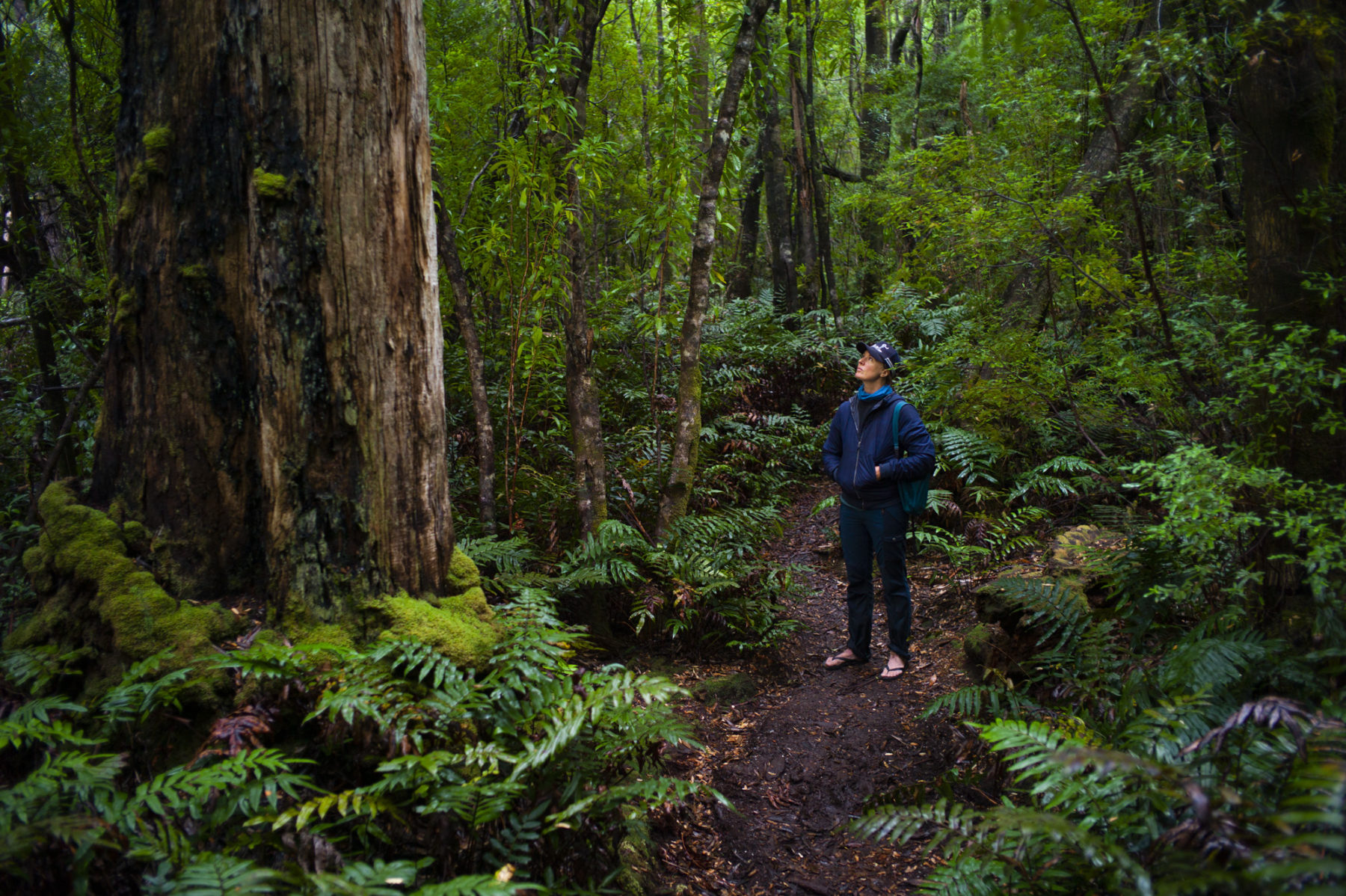
It’s not until the final 10 minutes of the 35-minute flight from nipaluna/Hobart to the remote airstrip at Melaleuca that we pass over land that hasn’t, at some stage, been heavily logged. Extensive damage has been done to this state’s natural environments during the past two centuries. For example, more than 85 per cent of lutruwita’s old-growth mountain ash forests are gone. Tasmania’s national parks and reserves play a crucial role in providing biodiverse safe havens for up to 680 threatened plant and animal species. At Melaleuca, Matt recently photographed a release of captive-bred critically endangered orange-bellied parrots. The species’ natural breeding grounds are nowhere else but here in the South West.
After landing, we head out on the Needwonnee Walk. It’s a 1200m-loop track that weaves through natural ecosystems and past ephemeral sculptures made and installed by palawa artists. Permanent interpretive signage explains the Creation story, which played out in part nearby at kripikara (the Cox Bight area).
We then set off along the South Coast Track. You can walk the trail in either direction, and during the 11.5km hike to our first campsite, we cross paths with several parties. They share information with us about river crossings and where to collect fresh water.
It’s possible to have guided experiences with ethical local operators in the South West. Trek Tasmania is one that offers seasonal departures: you still carry all your own gear and stay at public campsites, but the logistics are taken care of and you walk in groups with experienced guides.
Another operator, Roaring 40°s Kayaking, offers multi-day paddling expeditions on nearby Bathurst Harbour that require far less weight-bearing.
For our first camp, Matt and I set up in a melaleuca grove, near where Freney Lagoon drains in braids across sand into the Southern Ocean. Wombat prints mark the beach. Bull kelp keels in the swell like sea creatures bobbing for food. An exposed quartzite face serves as an appetiser to the dazzling geological diversity awaiting us. Around my tent, shiny-leafed native laurels reflect daylight and then moonglow. In the morning, I collect water in the fresh stream where on one bank delicate plants grow from silt between river rocks. After breakfast, we walk eastward along the beach towards an intermingling of low cloud, rising mist and sea spray. Eventually we turn inland.
After our 17km second day, we arrive at a campsite where Louisa River eases around a bend and roars over a rocky bed. Other walkers have already set up tents and are cooking, fishing, reading or having a dip. Ranging in age from nine to late-60s, they’re travelling solo, in couples or in small family groups. Few are the ultra-fit types I’d been led to believe would be the only people out here.
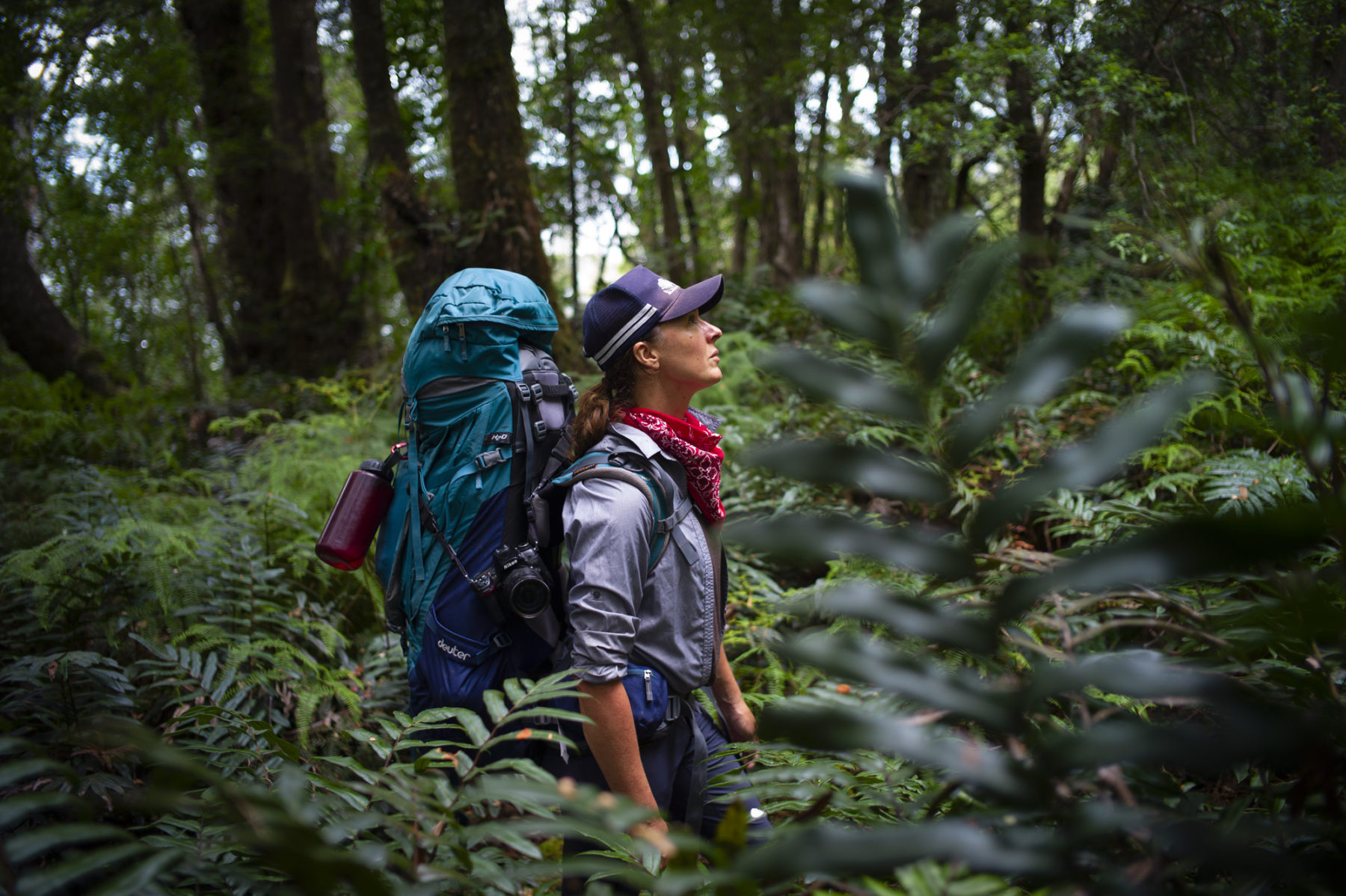
In March 2014, Tasmania’s government of the day called for expressions of interest (EOI) from private investors and operators to develop new “sensitive and appropriate” tourism products within national parks and reserves. Then-premier Will Hodgman envisaged expanding the state’s tourism industry to 1.5 million annual visitors by 2020 and the state becoming the “ecotourism capital of the world”.
In response, proposals included an art installation, e-biking tour, a multi-day cruise and a floating resort. One of the first submissions in June 2014 was from Tasmanian Walking Company (TWC) proposing a lodge at Lake Rodway, near the eastern side of Cradle Mountain, to accommodate 24 guests for two-night/three-day bushwalking experiences. By February 2015, five of 37 projects had been approved to proceed to stage two. In December 2016, the state government released a revised TWWHA Management Plan, which saw some places previously zoned as “wilderness” reclassified as “self-reliant recreation”. That same month, round two of the EOI process launched.
By August 2022, 10 projects had been issued leases or licences and commenced operating. Some 14 others had been endorsed and were in the assessment phase. The invitation for submissions remains open. There is no expiry date for lodged EOI, and while one is in the system, others can’t be proposed for the same location.
The EOI process has attracted scrutiny from public individuals and organisations, including the Tasmanian Aboriginal Centre, Fishers and Walkers Tasmania, the Wilderness Society, Bob Brown Foundation and the Tasmanian National Parks Association. The latter, in its June 2022 e-newsletter, criticised the state government’s “refusal to accept that there needs to be limits to visitor numbers in many of our national parks”.
A proposed semi-permanent camp to accommodate guests on Halls Island in Lake Malbena, within the Walls of Jerusalem National Park, which forms part of the TWWHA, has garnered significant public opposition. The submission for this luxury tourism product by Daniel and Simone Hackett, of RiverFly 1864, anticipated 240 annual helicopter transfers between Derwent Bridge and Lake Malbena. When Central Highlands Council refused the proposal in 2019, proponents took it all the way to the Supreme Court. RiverFly 1864 eventually withdrew its planning appeal yet continues to hold a signed lease/licence “subject to conditions”.
Basic information on proposals appears on the website of the Office of the Coordinator-General. However, many people have raised concerns about an overall lack of transparency in the EOI process. Among them is Holger Strie, founder and managing director of Trek Tasmania. “We’re the largest walking operator in the Walls of Jerusalem NP, but when it comes to Malbena, we were never consulted about any of it,” Holger says. “Surely, before any of this, you’d talk to those operating quality trips there.”
Sharnie Read, a palawa woman and an Aboriginal heritage officer and project facilitator for the Tasmanian Aboriginal Centre’s rrala milaythina-ti (strong in Country) project is also concerned. “The first we’ll know about anything,” Sharnie says, “is that these developers are knocking on the [Tasmanian Aboriginal community’s] door saying we want to consult with you. But [the projects] have already been taken to stage two by the government.”
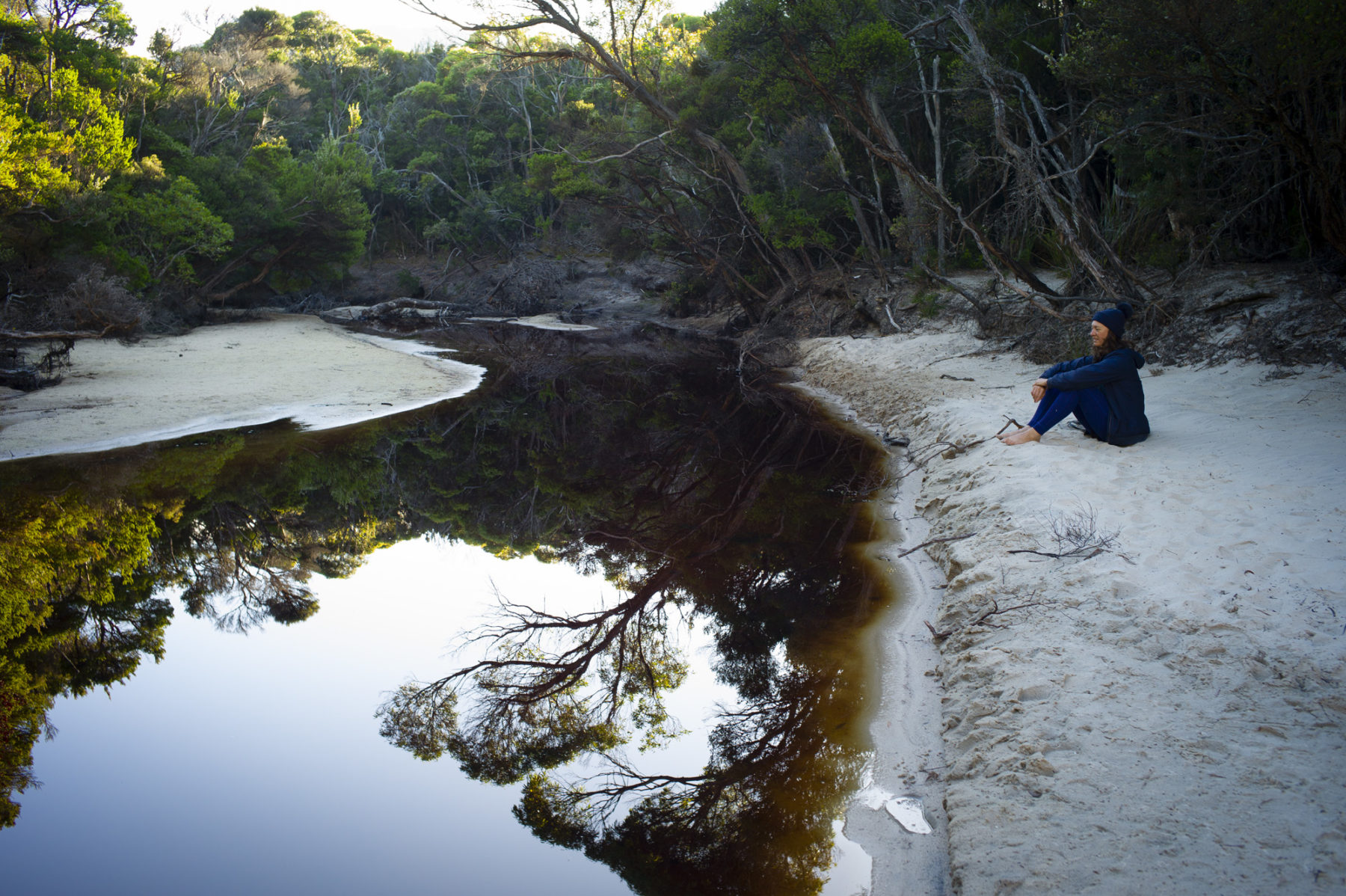
For thousands of generations, palawa have sustainably managed lutruwita’s many landscapes. As part of rrala milaythina-ti, Sharnie leads 10–12 trips a year, each up to nine days and to a specific location in lutruwita. The South West is one; a place Sharnie’s been to at least twice a year for 25 years. “For us, it’s about going into that Country, engaging in that space, learning, teaching and sharing those cultural values,” she says, explaining that these experiences deepen cultural identity. “Giving community members that reconnection and ability to get out and recharge is a medicine we can’t get from any doctor.”
Sharnie knows Aboriginal people in lutruwita each have an individual take on the EOI process. “[But] in a general context, and with my conversations with community members, it’s not supported,” she says. The Tasmanian Aboriginal Centre, which represents local political and community development aspirations, publicly opposes a six-hut high-end hiking experience proposed for the South Coast Track by ASX-listed Experience Co.
From Sharnie’s experience, private development in protected areas leads not only to desecration of sacred art, burial and ceremonial sites but causes cultural disruption and destruction in other ways too. One part of a landscape, she explains, leads to other spaces that may lead to a cultural ceremonial space. “Take those little aspects away and we’ll struggle to get to those ceremonial places,” she says. “They are as important. Just because there’s not a physical element in that landscape, in regards to what you consider as culture, doesn’t mean we see it that way at all.”
She understands non-Indigenous people, too, connect, in their own way, with the South West. Any suggestion, then, of Aboriginal land management can generate fear that non-Indigenous people will be denied access. “We’re not a community that shuts people out,” Sharnie says. “We don’t lock spaces off. If that was the case, we would have been saying a long time ago that the South Coast Track should be closed.”
There are heritage sites on the south coast of lutruwita that are at least 11,000 years old. “Some of our most sacred spaces on our island are our art sites because they’re the stories our Old People left for us,” Sharnie says. One site contains more than 600 overlapping images with stories able to be followed as they’re told through human figures, trackways and lizards. “Then you look to the side of that beautiful site, and its deep history of layers and layers that have been added to by community members and Ancestors, and there’s graffiti,” she says, describing it as soul-destroying.
It’s clear to Sharnie that if such impacts continued they could destroy living cultural landscapes forever. “What,” she asks, “will the people of lutruwita have to reflect on then? Destruction? The very things that people say they want to come here for, and that they value, will be gone.”
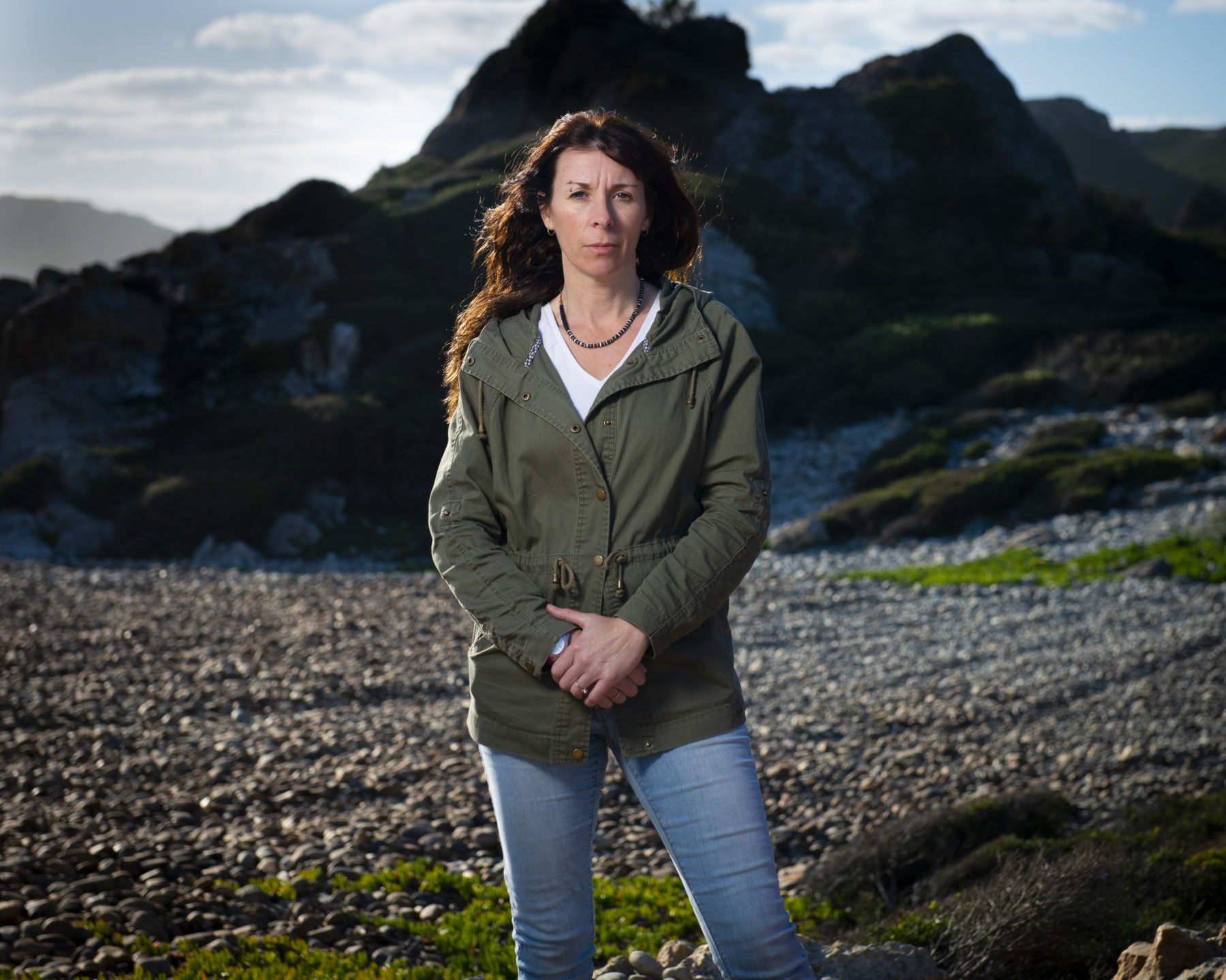
Private tourism-related development on public land isn’t unprecedented in lutruwita. In 1985 the state government sought tenders for Australia’s first commercial hiking operation in a national park, along the Overland Track in Cradle Mountain–Lake St Clair NP. Joan Masterman and Ken Latona won the contract, built four huts (later a fifth), and Cradle Mountain Huts was operational by 1987.
The following decade, they collaborated on Friendly Beaches Lodge in Freycinet National Park. In 2013 Virgin Blue Airlines co-founders Brett Godfrey and Rob Sherrard bought Cradle Mountain Huts and, in time, renamed it Tasmanian Walking Company (TWC). Two years later, Brett and former Qantas CEO Geoff Dixon created Australian Walking Company, and secured commercial licences to operate luxury multi-day walks in national parks within other Australian states and territories.
TWC’s Three Capes Lodge Walk opened in Tasman National Park in 2018 and they currently have four EOI in the pipeline. All propose building private huts, lodges and/or permanent camps in the TWWHA: Cradle Base Camp Experience, Overland Track Experience, Frenchman’s Cap Walk and Walls of Jerusalem Lodge Walk.
Along with the Experience Co proposal for the South Coast Track Walk, these projects are all currently progressing through the EOI process.
National Parks Australia Council – a coalition of state-based conservation groups – commissioned a poll in February 2022 “in response to the increasing trend of federal and state governments proactively spruiking and funding development and commercial interests over nature protection in national parks”.
A total of 1222 Australians, across all states and territories, were surveyed and the resulting report revealed 89 per cent agreed national parks are one of the best ways to protect nature in Australia, while 78 per cent said they did not support development in parks and protected areas.
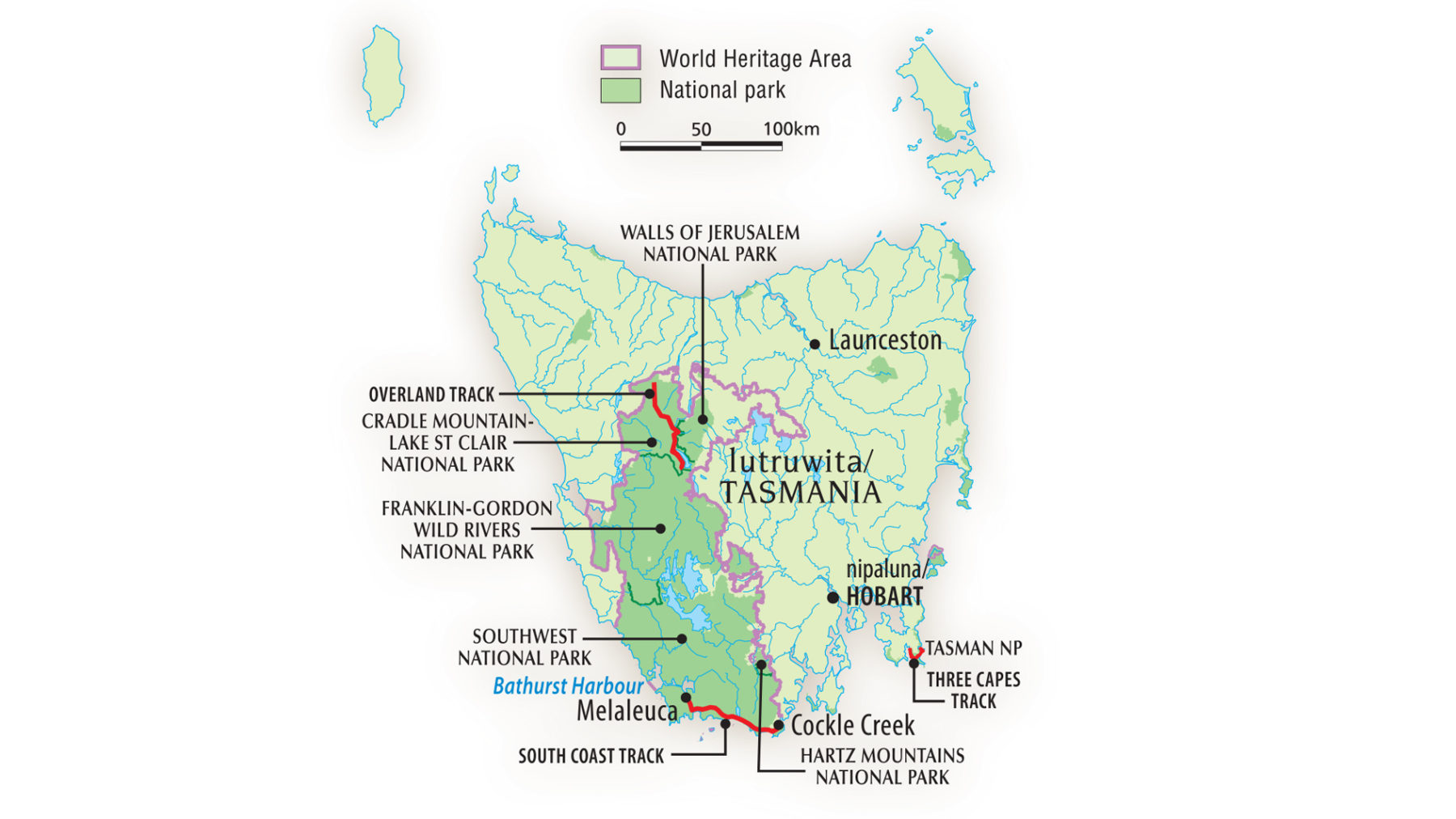
The Tasmanian wilderness was inscribed on the World Heritage List in 1982 and meets seven of UNESCO’s 10 cultural and natural selection criteria. In its 2021 mid-year report, UNESCO raised concerns about the lack of guidelines around how the wilderness values of the TWWHA are considered in decision-making processes related to tourism management and the EOI process. It has requested a detailed plan for comprehensive cultural heritage assessment before any development begins.
The South Coast Track Walk EOI was originally submitted by Ian Johnstone, then-owner of the Maria Island Walk – a four-day guided experience in Maria Island National Park off lutruwita’s east coast. In 2018 the federal government granted $2,950,000 for advancement of this Southwest NP-based development proposal. In 2021 Ian sold his business to Sydney-based adventure tourism company Experience Co, along with two South Coast Track-related EOI and the Maria Island EOI.
“When Maria Island was locally owned, I didn’t actually think they would get the South Coast project up because there are so few people in Tasmania that agree with it,” says Jenny Grundy, former co-owner of Roaring 40°s Kayaking. “Now it’s just a big company who aren’t going to care that most of Tasmania doesn’t want it there.”
Currently, the state’s most popular multi-day walk is the 48km-long Three Capes Track in Tasman NP. It’s the biggest construction project to date for the Tasmania Parks and Wildlife Service (PWS) – a $25.3 million state and federally funded development that involved three new public huts and upgrading of the original track linking Fortescue Bay to capes Hauy and Pillar. The build required 17,400 helicopter flights and the project opened in December 2015.
TWC won the tender to operate, on the same track, what has now become their Three Capes Lodge Walk. TWC pays $50,000 per year, or 5 per cent of its profits, whichever is greater, for the lease and the licence to operate two commercial lodges in the national park. It has a 30-year exclusive lease.
“No other company is allowed to do a guided walking experience on Three Capes,” says Holger Strie of Trek Tasmania. They can do day walks from either end, but they’re not allowed to guide Three Capes Track. “That was an exclusive deal done for one company.” In addition, the Tasmanian government has covered more than $300,000 of TWC’s marketing costs since 2019.
It’s still possible to independently hike to Cape Pillar, the tallest sea cliffs in the Southern Hemisphere, and camp en route. Yet it’s a very different experience from what it was prior to 2015, due to the considerable increase in year-round visitation, relocated campsites, an extensive metre-wide boardwalk and the gigantic boulders Parks and Wildlife had lowered, by helicopter, onto the cape to create a safer more fortress- like pinnacle.
Back when Three Capes Track was just a concept, supporters reasoned that building within Tasman NP was acceptable because the park’s wilderness value wasn’t as high as that of the TWWHA. Fast-forward to 2016, when the $160 million Cradle Mountain Master Plan proposed the construction of a cableway connecting a new visitor centre (opened in 2020) to Dove Lake, in Cradle Mountain–Lake St Clair NP.
Market research firm EMRS surveyed 600 visitors to Cradle Mountain–Lake St Clair NP on behalf of Tasmania PWS. EMRS’s 2021 report revealed 89 per cent were totally satisfied with the Dove Lake shuttle bus service and 81 per cent of respondents rated their overall experience of the park either nine or 10 out of 10. Until the report was leaked, those results were not publicly available.
On the home stretch of the South Coast Track, I turn my back on the Southern Ocean and walk north-east towards Cockle Creek. Everything hurts. Matt has galloped ahead. Day walkers coming in the opposite direction see my pack and congratulate me. Some even clap. I chat with almost everyone and learn that, despite their enthusiasm for my achievement, very few have walked more than this section or have any intention of ever journeying further into the South West. It seems enough for them just to know places like it exist.
